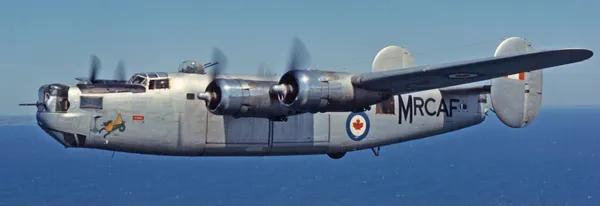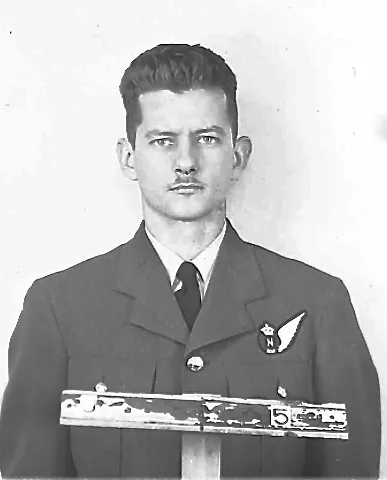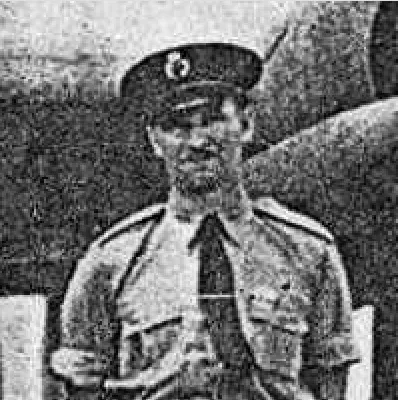Peel, Roland Tennyson (Civilian)
Killed in Flying Accident 1945-July-04


Birth Date: 1892-October-09
Born: Wavertree, Metropolitan Borough of Liverpool, Merseyside, England
Parents: Son of Edward Lennox Peel and Amy (nee Sparrow) Peel
Spouse: Husband of Marjorie Lillian (nee Thomas) Peel
Home: Bedford, Bedfordshire, England
Enlistment:
Enlistment Date: unkown date
Decorations: MC

Service
IO
Unit
45 Group (RAF)
Base
Dorval, Quebec
Rank
Civilian
Position
Passenger
Service Numbers
Crew or Other Personnel
Liberator JT982
Mission
Liberator C lX JT982
Transport 1945-July-03 to 1945-July-04
45 (T) Group (RAF) Dorval, Quebec
45 Group RAF Transport Command, Dorval, Quebec. Liberator C IX aircraft JT982, operated by a mixed crew of civilian and 231 Squadron aircrew, was scheduled for a flight from Washington DC USA to Northolt, England with stopovers in Dorval, Gander, Keflavik and Prestwick. The aircraft departed RCAF Gander on July 4, 1945 on the leg to Keflavik with a crew of 6 and 9 VIP passengers including several women, when the Liberator ditched in the North Atlantic, believed due to the elevator becoming jammed. An intensive two week air and sea search was carried out, during which a second, RCAF Liberator 595 was lost in the Atlantic, but no trace of the aircraft, crew or passengers of Liberator JT982 were found
Passengers:
Crew:
Ocean Bridge, The History of RAF Ferry Command by Carl A Christie pages 132, 135-9, 217,259,329
The Liberator in Royal air Force and Commonwealth Service by James D Oughton with John Hamlin and Andrew Thomas
Liberator serial: JT982

Consolidated Liberator G.R. Mk. VIII, RCAF (Serial No. 11130) ex-USAAF Consolidated (Vultee) B-24L Liberator USAAF (44-50154)
ex-RAF (Serial No. 5009), ex-Indian Air Force (Serial No. HE773).
Currently preserved in the Canada Aviation and Space Museum Ottawa Ontario.
The Consolidated B-24 Liberator was an American heavy bomber flown by the RCAF during the Second Word War. It was designed with a shoulder-mounted, high aspect ratio Davis wing which gave the Liberator a high cruise speed, long range and the ability to carry a heavy bomb load. Early RAF Liberators were the first aircraft to cross the Atlantic Ocean as a matter of routine. In comparison with its contemporaries the B-24 was relatively difficult to fly and had poor low speed performance; it also had a lower ceiling compared with the Boeing B-17 Flying Fortress. Of the roughly 18,500 B-24s built in the USA during the war, 148 were flown by the RCAF on long range anti-submarine patrols, with the B-24 serving an instrumental role in closing the Mid-Atlantic gap in the Battle of the Atlantic. The RCAF also flew a few B-24s post war as transports.
Roughly half of all (RAF) Liberator crews in the China-Burma-India (CBI) Theatre were Canadian by the end of the war. John Muir of Vancouver flew the longest mission of the war: 24hrs, 10mins from Ceylon to Burma and back. (Kyle Hood) Harold Skaarup web page
Aircraft Images
Liberator JT982
Liberator C lX JT982
{{storedairimage,LiberatorJT982.jpg,float:right;width:500px;margin-left:10px,London Evening Standard July 6 1945}}An RAF Ferry Command C.IX Liberator, JT982 of 231 Squadron, was scheduled for a Washington, Dorval, Gander, Keflavik, Prestwick, and Northolt flight itinerary. The aircraft departed RCAF Gander on July 4, 1945 on the leg to Keflavik with a crew of 4 and 11 VIP passengers including several women. While enroute towards Keflavik, the Liberator ditched in the North Atlantic apparently due to the elevator becoming jammed. Although an intensive two week air and sea search was carried out, no trace of the aircraft or crew and passengers were ever found from the missing Liberator.
1945-July-04 Accident: 45 GROUP Loc: Missing Names: Cole-Hamilton | Dunn | Evans | Hibbard | Keates | Malkin | Meagher | Patterson | Peel | Ross | Scupham | Spurway | Swaney | Tollard






